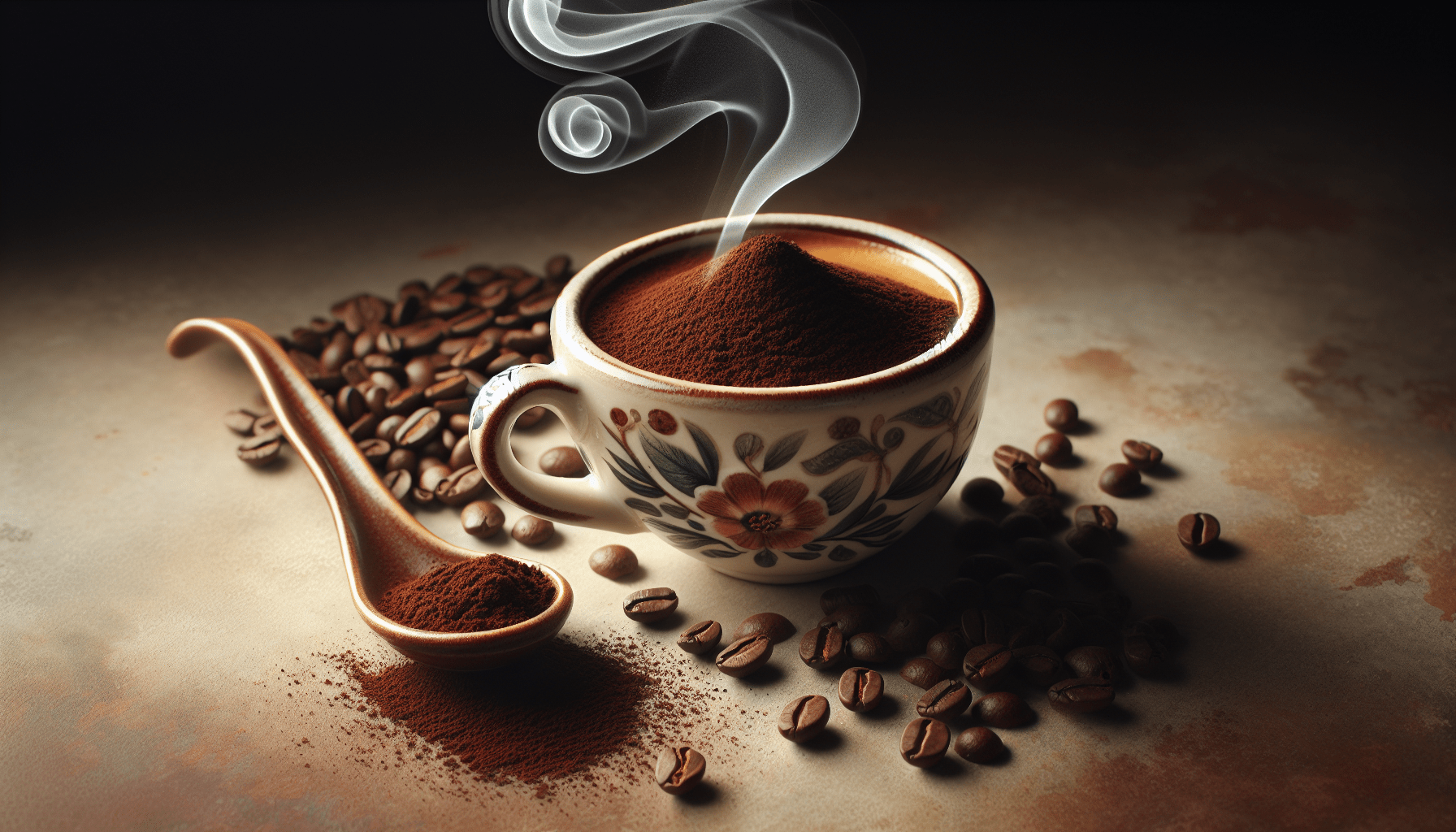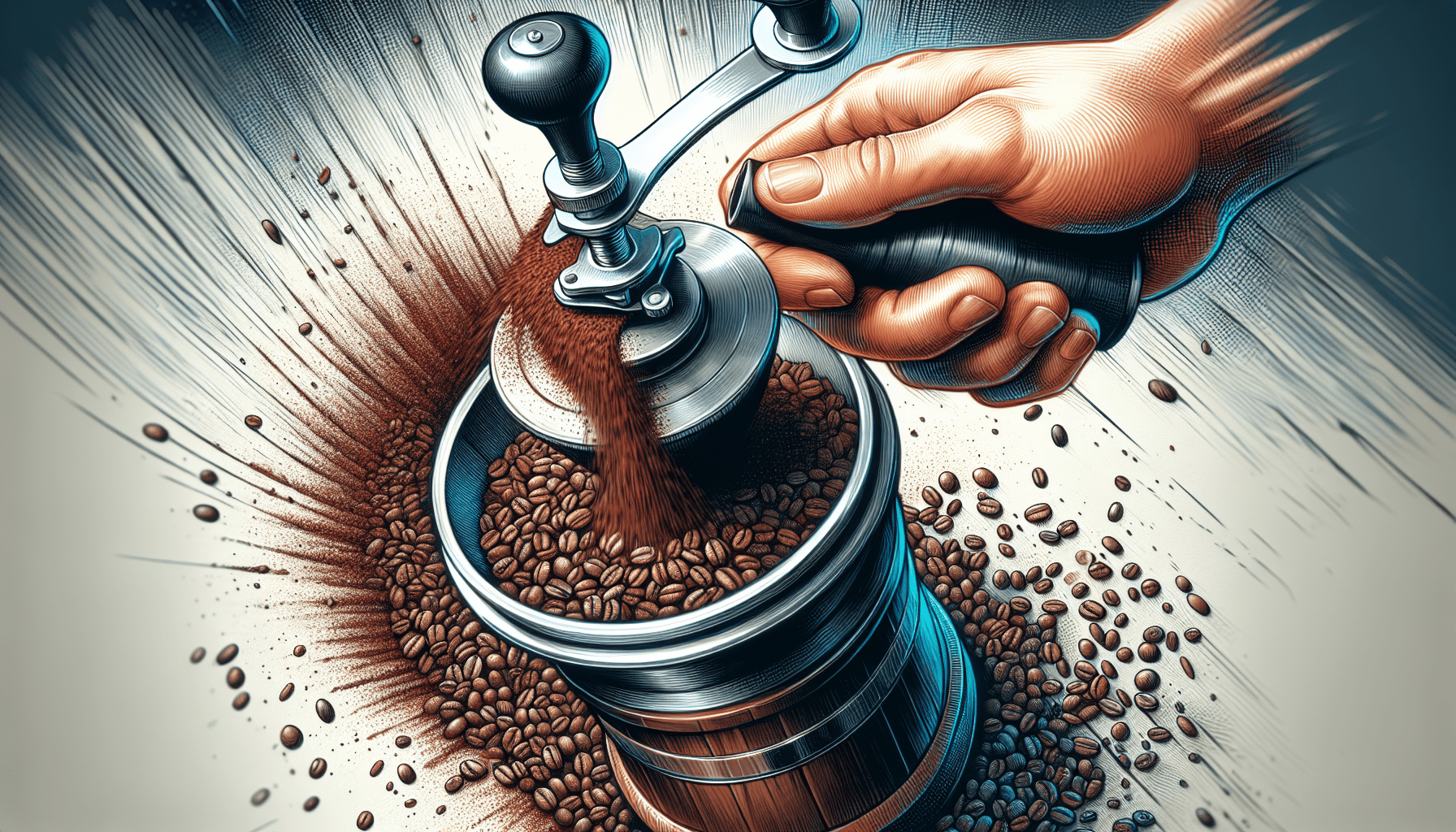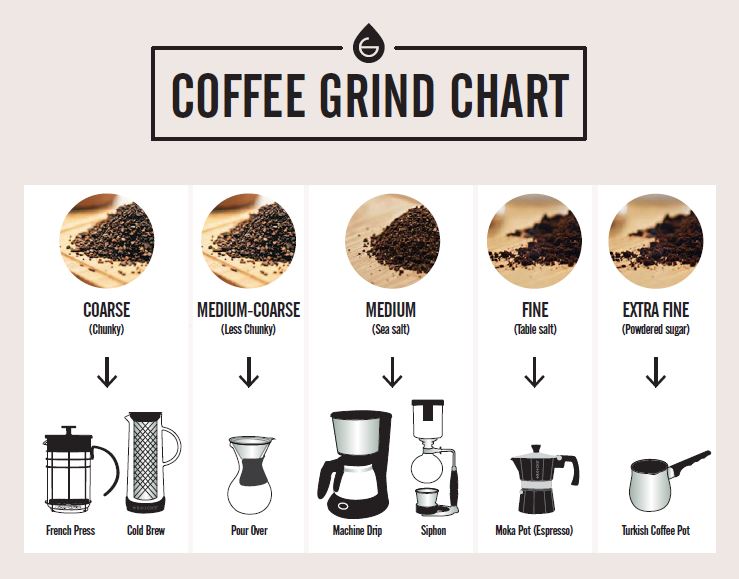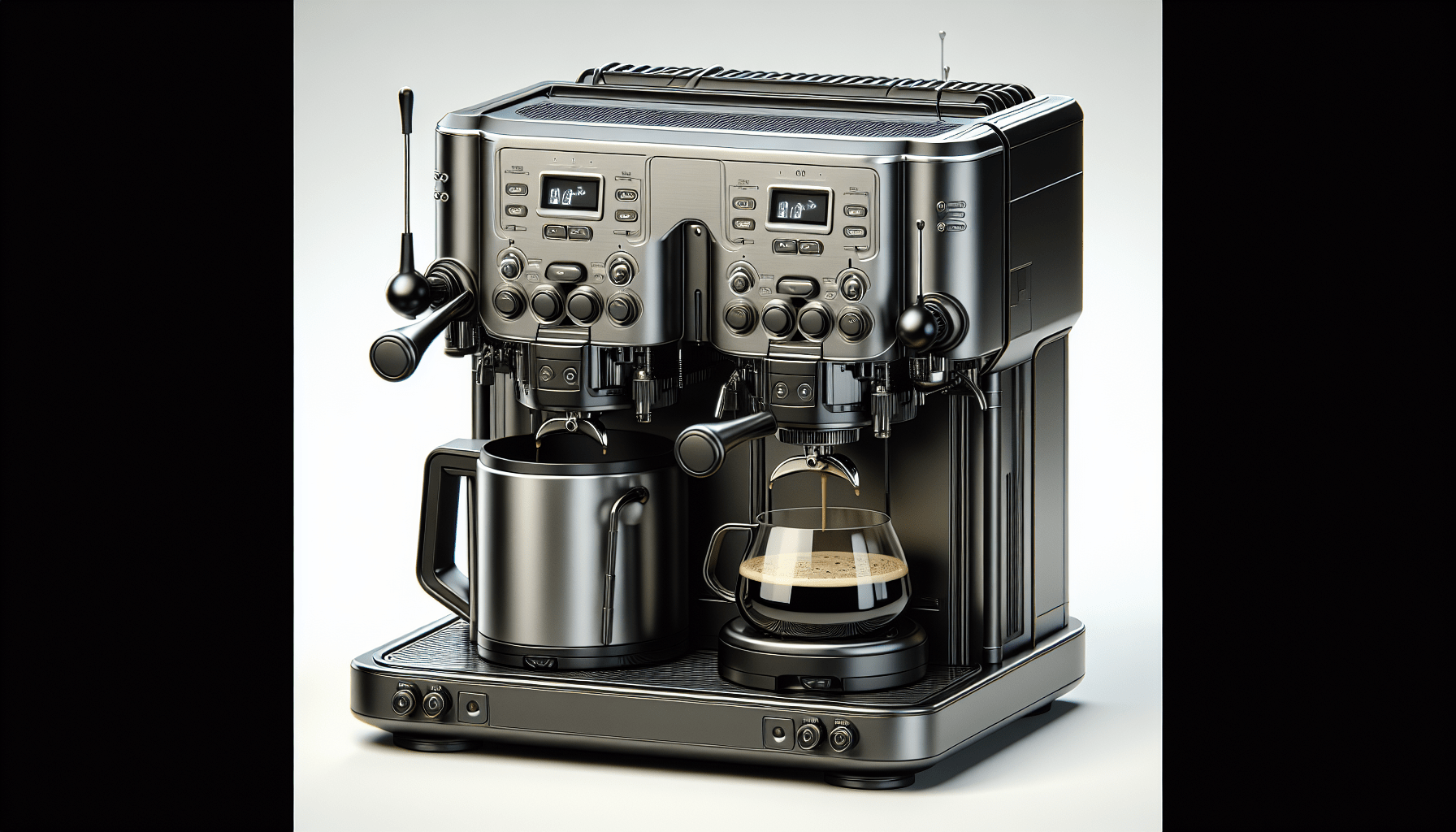If you’re a coffee lover who wants to enjoy a rich and flavorful espresso shot without owning an espresso machine, you’ve come to the right place. Making espresso at home without the fancy equipment might seem like an impossible task, but fear not, because we have some tricks up our sleeve to share with you. In this article, we will guide you through the process of making a delicious cup of espresso using alternative methods that you probably already have in your kitchen. So grab your favorite coffee beans and let’s get brewing! Making espresso without an espresso machine may seem daunting at first, but with the right equipment and techniques, it is entirely possible to enjoy a delicious cup of homemade espresso. In this article, we will guide you through the process of making espresso using alternative brewing methods such as a stovetop espresso maker, drip coffee maker, Moka pot, and French press. We will also provide tips on choosing the right coffee beans, mastering the art of espresso making, enhancing the espresso experience, troubleshooting common issues, and appreciating the versatility of alternative brewing methods.
Equipment needed
Before we dive into the various methods of making espresso without an espresso machine, let’s take a look at the essential equipment you will need:
Coffee grinder
A coffee grinder is an indispensable tool for achieving consistently ground coffee beans. It allows you to control the grind size, which is crucial for extracting the flavors and aromas of the coffee. Invest in a quality burr grinder for the best results.
Stovetop espresso maker
Also known as a moka pot, a stovetop espresso maker is an iconic and affordable device for brewing espresso-like coffee. It consists of three chambers: a bottom chamber for water, a middle chamber for ground coffee, and a top chamber for the brewed espresso.
Drip coffee maker
While primarily used for brewing regular coffee, a drip coffee maker can also be used to make a decent cup of espresso. Look for a coffee maker with a strong brewing option and the ability to adjust the coffee-to-water ratio.
Moka pot
Similar to a stovetop espresso maker, a Moka pot is another popular alternative for making espresso-like coffee. It operates on the same principle and produces a strong and flavorful brew. Opt for a Moka pot with a capacity that suits your needs.
French press
Although traditionally used for brewing regular coffee, a French press can also produce a rich and full-bodied espresso-like beverage. Its immersion brewing method allows for a longer extraction time, resulting in a more robust flavor.
Now that you have all the necessary equipment, let’s move on to the next step: choosing the right coffee beans.
Choosing the right coffee beans
To achieve a delicious espresso-like beverage, selecting the right coffee beans is crucial. Here are some tips to help you choose the perfect beans:
Selecting dark roasted beans
Dark roasted beans are ideal for making espresso due to their rich flavor profile and lower acidity. They are roasted for a longer period, resulting in a dark and oily surface that contributes to a full-bodied cup of espresso.
Opting for espresso blend
Espresso blend specifically caters to the characteristics and flavor profile desired in an espresso. These blends are typically a combination of different coffee beans, carefully crafted to achieve a balanced and flavorful shot.
Avoiding oily beans
While a moderate amount of oil on the surface of coffee beans is normal, excessively oily beans can clog the grinder and affect the taste of the espresso. Look for beans with a moderate oiliness to ensure a smooth brewing process.
Grinding beans to the right consistency
The grind size of the coffee beans can greatly affect the extraction process and the taste of the espresso. For most brewing methods, a fine to medium-coarse grind is recommended. Experiment with different grind sizes to find the perfect consistency for your preferred brewing method.
Once you’ve selected the perfect beans, it’s time to dive into the various methods of making espresso without an espresso machine.
Using a stovetop espresso maker
A stovetop espresso maker, also known as a Moka pot, is a classic and straightforward method for brewing espresso-like coffee. Here’s how you can make espresso using this method:
Filling the bottom chamber with water
Start by filling the bottom chamber of the stovetop espresso maker with cold water. The water level should be just below the pressure valve or the fill line indicated on the pot.
Adding ground coffee to the filter basket
Next, fill the filter basket with finely ground coffee. Ensure that the coffee is evenly distributed and gently tamp it down using your finger or a tamper. However, avoid compressing the coffee too firmly.
Screwing the top and bottom chambers together
Once the coffee is in place, screw the top chamber onto the bottom chamber, making sure it is tightly sealed. Be careful not to over-tighten the pot, as it can make unscrewing difficult after brewing.
Placing the stovetop espresso maker on the stove
Now, place the stovetop espresso maker on the stove over medium heat. Ensure that the handle is kept away from the heat source to prevent burns.
Monitoring the brewing process
As the water heats up, steam will be created, which will pass through the coffee grounds and collect in the top chamber as brewed espresso. Keep an eye on the process and remove the pot from the heat when you hear a hissing sound or when the top chamber is full.
Serving and enjoying the espresso
Once you’ve removed the stovetop espresso maker from the heat, let it sit for a few moments to allow the water and coffee to separate. Then, pour the brewed espresso into your favorite espresso cup or shot glasses, and savor the rich flavors and aromas of your homemade espresso.
The stovetop espresso maker provides a convenient and affordable way to enjoy espresso-like coffee without the need for an espresso machine. However, if you prefer using a drip coffee maker for your brewing needs, let’s explore how you can make espresso-like coffee with this method.
Making espresso with a drip coffee maker
A drip coffee maker may not be specifically designed for brewing espresso, but with the right techniques, you can still achieve a satisfying cup of espresso-like coffee. Here’s how:
Using a dark roasted coffee
When making espresso with a drip coffee maker, it is essential to choose a dark roasted coffee. These beans are roasted longer, resulting in a rich and bold flavor that complements the brewing process.
Grinding the coffee to a fine consistency
Grind the coffee beans to a fine consistency to ensure proper extraction. Remember, the grind size plays a crucial role in determining the strength and flavor profile of your espresso-like coffee.
Adding water to the reservoir
Fill the water reservoir of your drip coffee maker according to the manufacturer’s instructions. Make sure you use fresh and filtered water for the best taste.
Placing the coffee filter in the basket
Insert a paper or reusable filter into the coffee maker’s basket. Ensure it is properly seated and covers the entire basket area.
Adding the ground coffee to the filter
Add the finely ground coffee to the filter basket of the drip coffee maker. The amount of coffee depends on your desired strength, but a general rule of thumb is to use approximately one tablespoon of coffee per cup of water.
Starting the brewing process
Switch on the drip coffee maker and let it brew. The water will slowly drip through the coffee grounds, extracting the flavors and oils.
Collecting the brewed espresso
Once the brewing process is complete, you can collect the espresso-like coffee in a preheated cup or shot glass. Pay attention to the coffee-to-water ratio, as this will affect the strength of your beverage.
Adjusting the coffee-to-water ratio
If the resulting espresso-like coffee is too weak or too strong for your liking, you can adjust the coffee-to-water ratio for subsequent brews. Experiment with different ratios until you find the perfect balance.
While a drip coffee maker may not produce the same intensity and crema as an espresso machine, it can still provide a decent approximation of espresso-like coffee. However, if you’re looking for a closer match to authentic espresso, a Moka pot might be the brewing method for you.
Brewing espresso with a Moka pot
The Moka pot is a versatile and practical tool for making rich and robust espresso-like coffee. Here’s how you can brew espresso using a Moka pot:
Filling the bottom chamber with water
Begin by filling the bottom chamber of the Moka pot with cold water. The water level should be just below the pressure release valve.
Adding ground coffee to the filter basket
Next, fill the filter basket with finely ground coffee. It’s crucial to evenly distribute the coffee and avoid compacting it too tightly.
Screwing the top and bottom chambers together
Once the coffee is in place, screw the top and bottom chambers of the Moka pot together. Ensure they are tightly sealed but be mindful not to overtighten.
Placing the Moka pot on the stove
Place the Moka pot on the stove over medium heat. Ensure that the handle is kept away from the heat source to prevent burns.
Adjusting the heat intensity
Unlike a stovetop espresso maker, the heat intensity for a Moka pot should be adjusted based on personal preference. Experiment with different heat intensities to find the brew strength that suits your taste.
Monitoring the brewing process
As the water heats up, pressure builds and forces the water through the coffee grounds, resulting in espresso-like coffee collecting in the top chamber of the Moka pot. Keep an eye on the process and remove it from the heat once the top chamber is full.
Pouring and enjoying the espresso
After removing the Moka pot from the heat, let it rest for a few moments to allow the water and coffee to separate. Then, pour the brewed espresso into your desired cup or shot glass and indulge in the rich and intense flavors of your homemade espresso.
The Moka pot is a versatile brewing method that provides a more authentic espresso experience compared to other alternatives. However, if you prefer a slightly different approach, a French press can also yield a satisfying cup of espresso-like coffee.
Using a French press for espresso
While a French press is traditionally used for brewing regular coffee, it can be adapted to create a strong and full-bodied espresso-style beverage. Here’s how you can use a French press to make espresso-like coffee:
Using dark roasted coffee
As with other brewing methods, it is essential to choose dark roasted coffee beans when using a French press to make espresso-style coffee. This roast level provides the bold flavors and rich body typically associated with espresso.
Coarsely grinding the coffee
Contrary to other methods, a French press requires a coarser grind for espresso-style coffee. Aim for a consistency finer than regular coffee but still coarser than what you would use for espresso in a machine.
Adding the ground coffee to the French press
Measure the desired amount of coffee and add it to the French press. Use approximately one tablespoon of coffee per cup of water, adjusting to taste.
Pouring hot water over the coffee
Pour hot water over the coffee grounds, making sure to saturate all the grounds evenly. The water should be just below boiling point for optimal extraction.
Stirring gently
Using a spoon or stirring rod, gently stir the coffee and water mixture to ensure even saturation of the grounds.
Allowing the coffee to steep
Place the plunger on top of the French press but refrain from plunging it down just yet. Let the coffee steep for about four minutes, allowing the flavors and oils to infuse.
Pressing the plunger slowly
After the designated steeping time, slowly press the plunger down to separate the brewed coffee from the grounds. Take care not to rush this step, as it may result in excessive sediment in the final cup.
Pouring and savoring the espresso
Finally, pour the brewed espresso-like coffee into your favorite cup or shot glass, and take a moment to appreciate the bold and satisfying flavors of your homemade creation.
Using a French press for espresso-style coffee may not provide the same intensity and crema as a true espresso machine, but it can still deliver a delightful cup of strong and flavorful coffee. The beauty of alternative brewing methods lies in the ability to experiment and refine your techniques over time.
Mastering the art of espresso making
Brewing espresso without an espresso machine is an art that can be mastered with practice and attention to detail. Here are some tips to help you refine your espresso-making skills:
Experimenting with different coffee beans
Don’t be afraid to try different types of coffee beans and blends to find the flavor profile that appeals to you the most. Each variety and roast level can bring unique nuances to your homemade espresso.
Adjusting the grind size for desired extraction
The ideal grind size depends on the brewing method and personal preference. Experiment with different grind sizes to find the sweet spot that results in a balanced extraction of flavors.
Understanding the importance of water temperature
Water temperature plays a significant role in brewing espresso. Aim for water between 195°F and 205°F (90°C and 96°C) for optimal extraction, but avoid boiling water, as it can scorch the coffee grounds.
Practicing proper tamping techniques
If you choose to tamp the coffee grounds, ensure that the pressure is even and consistent. Use a light but firm pressure to compact the grounds, allowing for even water distribution during extraction.
Taking note of extraction time
Monitor the time it takes for the espresso-like coffee to brew. Extraction time can influence the strength and flavor profile of your beverage. Aim for a total extraction time of around 25 to 30 seconds.
Refining the brewing process over time
As you continue to practice and experiment, you will develop a deeper understanding of the brewing process. Take note of the variables you adjust and the resulting flavors to refine your technique and consistently produce exceptional espresso-like coffee.
By mastering the art of espresso making, you can create a cup of homemade espresso that rivals the quality of professional coffee shops. But to truly enhance the espresso experience, there are a few additional tips and techniques that you can incorporate.
Enhancing the espresso experience
While the process of brewing espresso without an espresso machine can be rewarding on its own, there are several ways to elevate the experience and create an indulgent treat. Here are some suggestions:
Using fresh and filtered water
The quality of water used in brewing espresso can significantly impact the taste of the final product. Use fresh and filtered water to ensure a clean and pure flavor profile.
Preheating equipment before brewing
To maintain proper extraction temperature, preheat your brewing equipment, such as the stovetop espresso maker, Moka pot, or French press. This step ensures that the water does not lose too much heat during the brewing process.
Adding variations like syrups or spices
Experiment with different flavor additions to create unique espresso beverages. Try adding flavored syrups or spices like cinnamon or vanilla for an extra burst of taste and aroma.
Experimenting with milk-based drinks
Espresso serves as the foundation for various milk-based drinks, such as lattes and cappuccinos. Explore different milk frothing techniques and ratios to create creamy and velvety beverages.
Exploring latte art techniques
Mastering the art of latte art can add a visual appeal to your homemade espresso drinks. With practice and patience, you can learn to create intricate designs using steamed milk.
Pairing espresso with complementary foods
To fully enjoy the sensory experience of espresso, consider pairing it with complementary foods. Chocolate, pastries, and almonds are just a few examples of foods that can enhance the flavor profile of your espresso.
By incorporating these enhancements into your espresso-making routine, you can elevate your at-home brewing experience to the next level. However, if you encounter any issues during the brewing process, we’ve got you covered with some troubleshooting tips.
Common troubleshooting tips
Espresso-making is not without its challenges, but with the right troubleshooting techniques, you can overcome common issues and enjoy a satisfying result. Here are some troubleshooting tips to keep in mind:
Adjusting coffee-to-water ratio
If your espresso-like coffee turns out too weak or too strong, adjust the coffee-to-water ratio. Increase the amount of coffee for a stronger brew or decrease it for a milder cup.
Ensuring proper grind size
Grind size can significantly affect the extraction process. If your espresso is under-extracted and tastes sour or weak, try using a finer grind. If it tastes bitter or over-extracted, opt for a coarser grind.
Checking equipment for leaks or clogs
Regularly inspect your equipment for any leaks or clogs that can impact the brewing process. Ensure all parts are properly sealed and clean any residue that may be obstructing the flow of coffee.
Using the right heat intensity
Adjust the heat intensity based on your desired brew strength. Too high a heat can lead to a bitter and over-extracted espresso, while too low a heat may result in a weak and under-extracted cup.
Cleaning and maintenance of equipment
Proper cleaning and maintenance of your brewing equipment are essential for optimal performance. Regularly clean the equipment and remove any residue that may affect the taste of your espresso.
By following these troubleshooting tips, you can overcome common issues and enjoy a consistently delicious cup of espresso-like coffee.
Conclusion
Making espresso without an espresso machine is entirely possible with the right equipment and techniques. Whether you choose to use a stovetop espresso maker, drip coffee maker, Moka pot, or French press, you can achieve a satisfying cup of homemade espresso. By selecting the right coffee beans, mastering the art of espresso making, enhancing the espresso experience, and troubleshooting common issues, you can create espresso-like coffee that rivals the quality of professional coffee shops. So, don’t limit yourself to an espresso machine – grab your favorite alternative brewing equipment and start exploring the versatile world of homemade espresso today!




